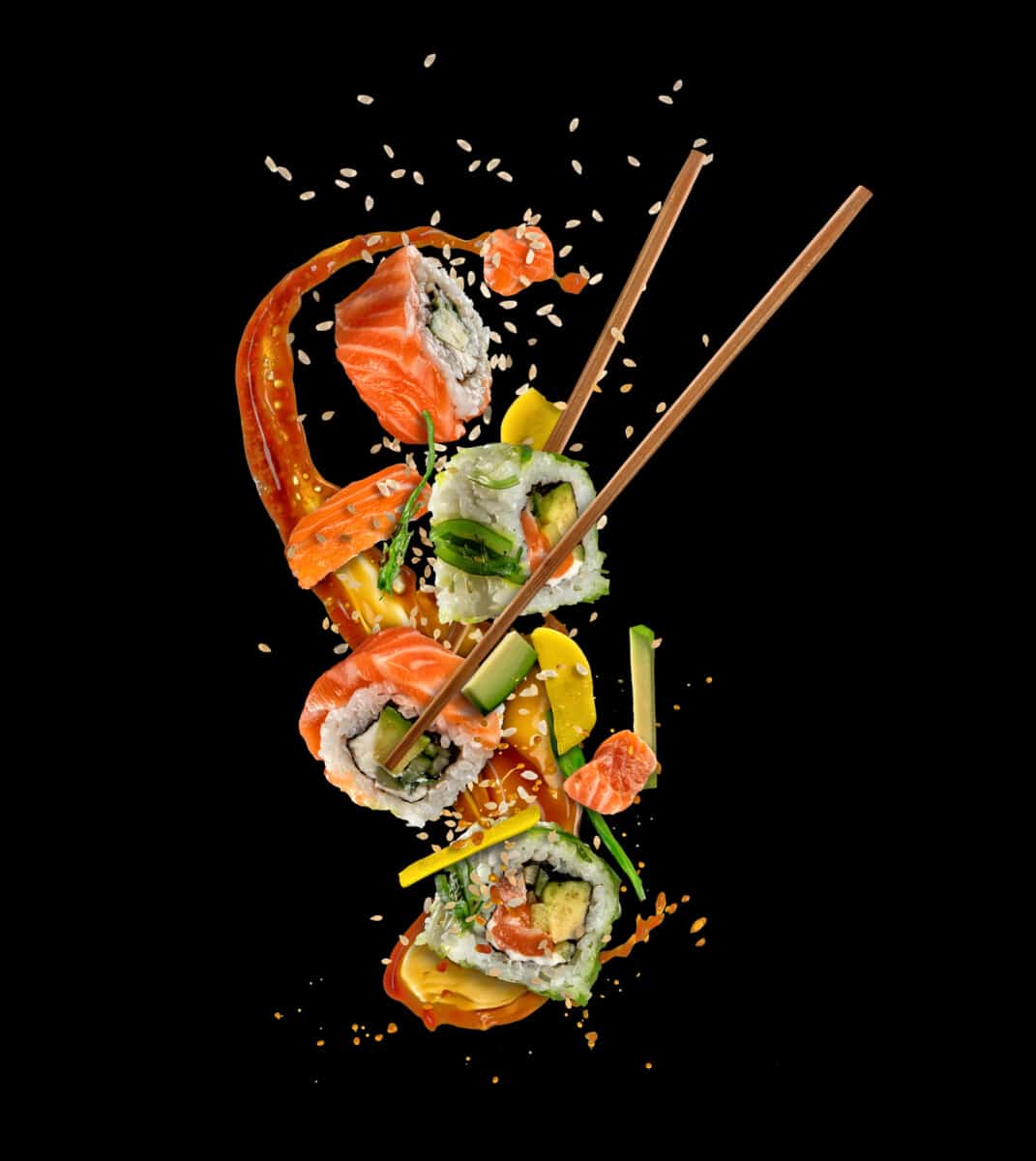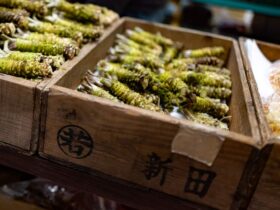I can’t remember the first experience I had eating sushi. It must have been at a local restaurant here in the states and curiosity got the best of me.
Honestly, I can say it has become my favorite food of choice, and finding good sushi although not easy, is one thing I will return to over and over.
The dedication of sushi chefs in Japan is incredible. A favorite film of mine that explains the lifetime of work that many Japanese have put into their work is amazing. Take a look at the bottom of this article for a link to Jiro’s amazing story.
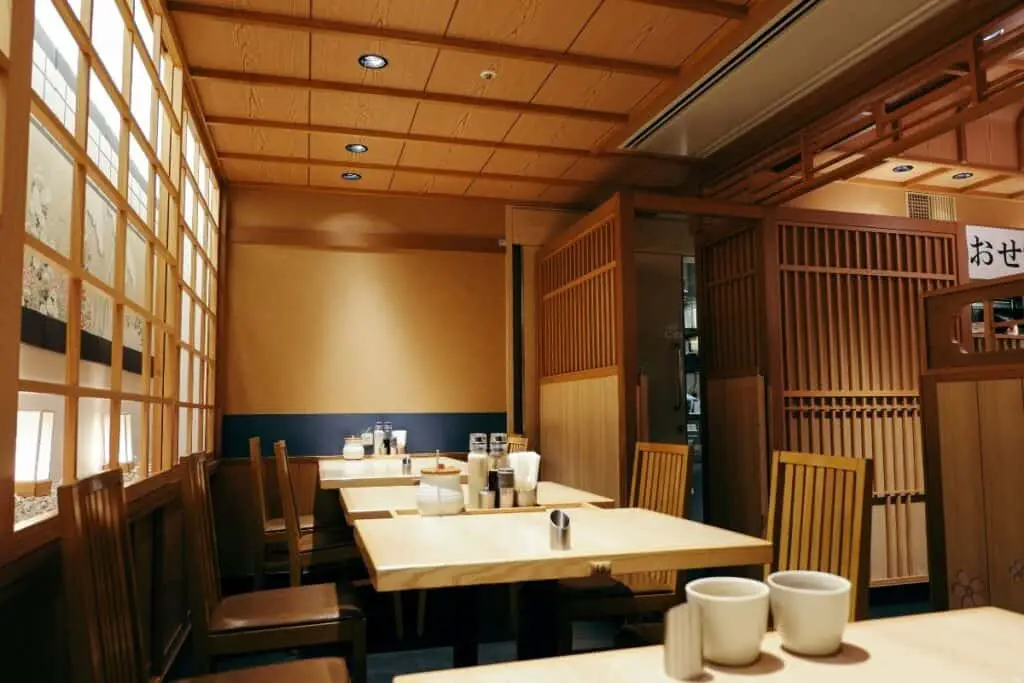
Sushi is generally made with medium-grain white rice, however, brown rice or short-grain rice can also be used.
Squid, eel, yellowtail, salmon, tuna, or crab meat are frequently used in its preparation. Sushi incudes in a number of vegetarian options. It’s frequently accompanied by pickled ginger, wasabi,(Japanese horseradish), and soy sauce.
The dish is often topped with daikon radish or pickled daikon. Sushi is frequently confused with sashimi, a Japanese food consisting of thinly sliced raw fish.
Sushi rice or sticky rice that has been vinegared is a typical element in all varieties of sushi. The fillings, toppings, condiments, and methods of cooking are all different.
Seven Most Common types of Sushi
Where there is fish, there is water
japanese proverb
Nigiri
Composed of an oblong mound of sushi rice squeezed between the chef’s palms to form an oval-shaped ball, and a topping (the neta) wrapped over it.
Neta are in most preparations fish such as salmon, tuna, or other seafood and are frequently served with a very small amount of wasabi (Japanese Horseradish).
Certain toppings, such as octopus (tako), freshwater eel (unagi), sea eel (anago), squid (ika), and sweetened egg, are frequently attached to the rice using a thin strip of nori (tamago).
A sushi set (sampler plate) may only contain one piece of each topping, but one order of a specific type of fish usually yields two pieces.
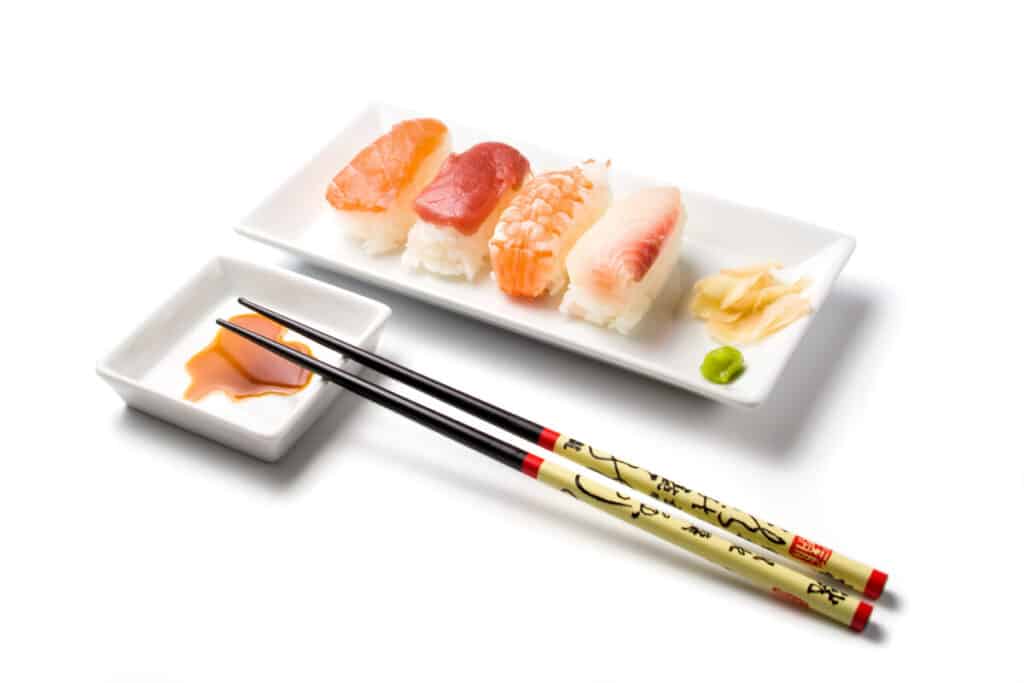
As a general rule Nigiri literally translates to “two fingers.” This is a single bite-sized piece that consists of a thinly sliced strip of raw fish set over a hand-molded mound of sweet and salty vinegared rice. Bluefin tuna, salmon, or halibut are used to make the best nigiri sushi.
Chirashi
Chirashi is a staple of most sushi restaurants’ menus, consisting of cut sashimi on a bowl of perfectly cooked sushi rice and decorated with a variety of extra items.
It’s eaten on Hinamatsuri in March and Kodomonohi in May every year.
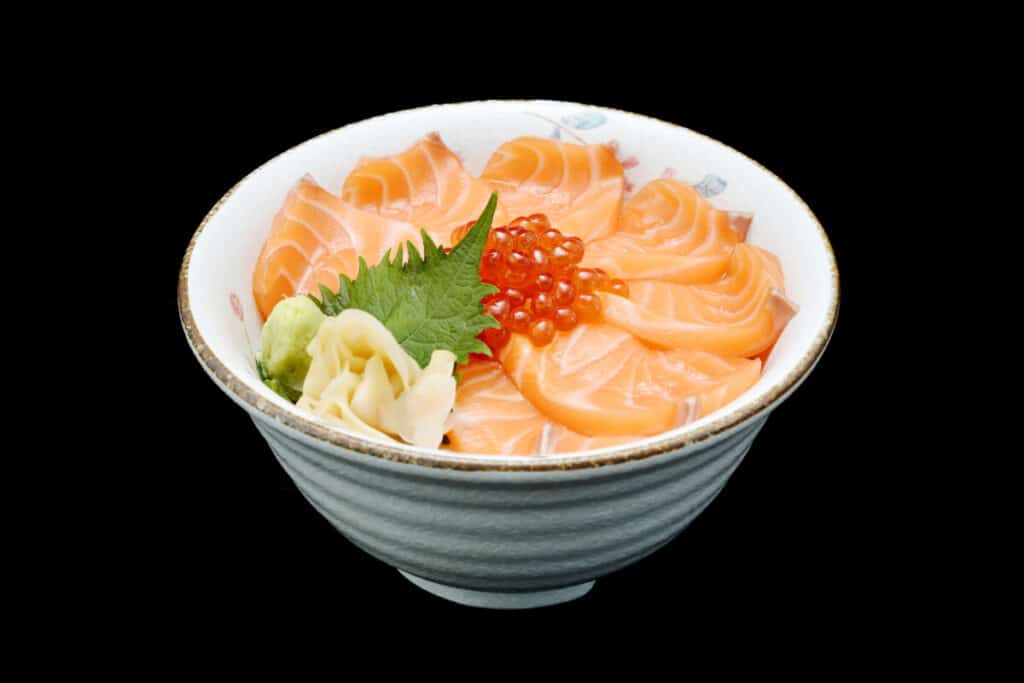
Inari
Inari is sweetly fried and seasoned. Some may find it excessively sweet on its own, but this sweet Aburaage (fried tofu pouch) pairs wonderfully with sushi rice. Aburaage is deep-fried tofu that is used in a variety of Japanese foods. It has a slightly springy feel that caters to the majority of individuals.
Inari although it doesn’t contain any type of fish, it’s still considered sushi.
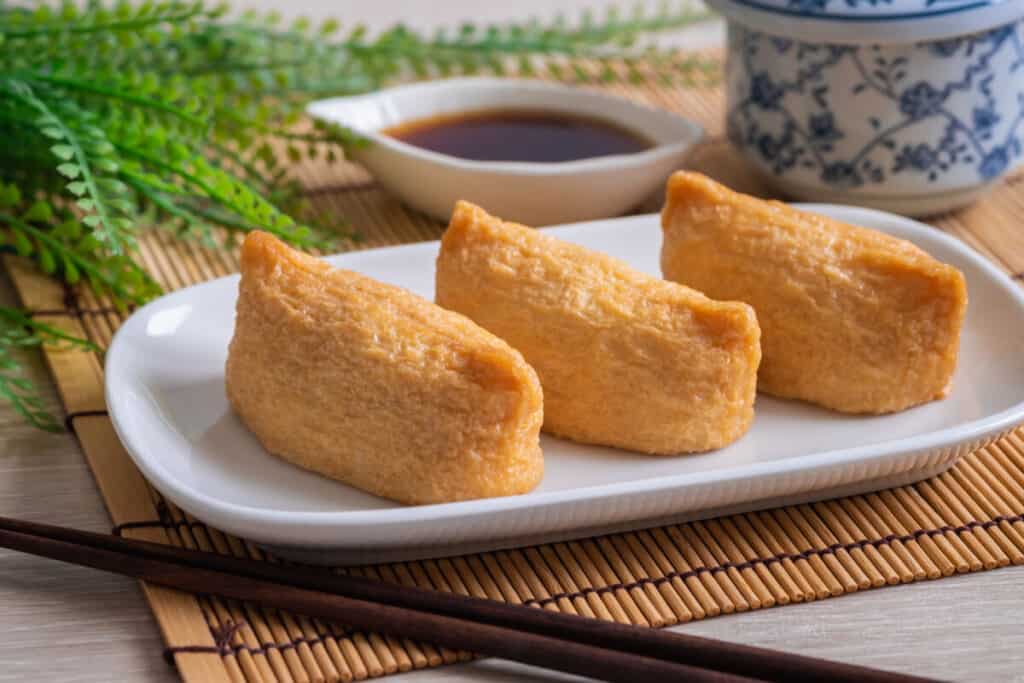
Temaki
Temaki is sushi that is hand-rolled with a single cone-shaped sheet of seaweed on the exterior with a variety of items spilling out of the end, nearly always including varieties of fish. It’s easiest to eat with your fingers because it’s generally too large to pick up with chopsticks.
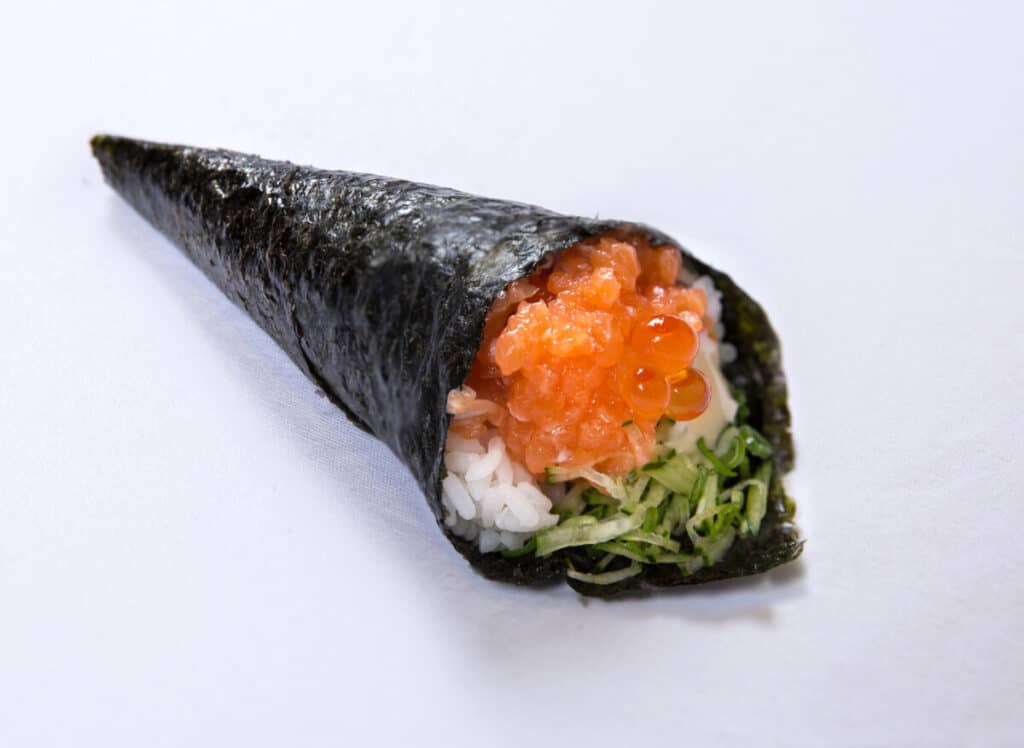
Oshizushi
Oshizushi, also recognized as hako-zushi (box sushi), is a form of pressed sushi that originated in the Kansai region and is a beloved specialty of Osaka.
A wooden mold called an oshibako is used to create block-shaped sushi. The chef arranges the toppings in the bottom of the oshibako, tops them with sushi rice, and then pushes the mold’s lid down to form a compact, pressed block. After removing the block from the mold, it is cut into bite-sized pieces.
Raw fish is rarely used, and all of the ingredients are generally cooked or cured.
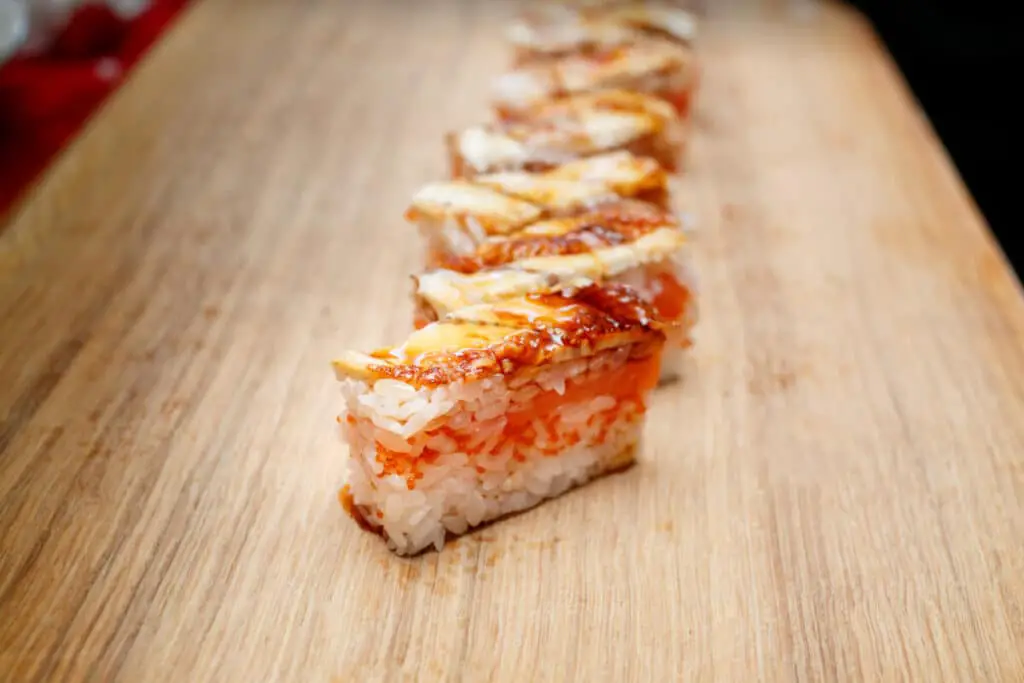
Norimaki
Most westerners, when they think of sushi Norimaki is what they are most familiar with. Found at many restaurants and grocery stores in North America and Europe.
Nori-maki is the most common, quick-to-eat sushi roll. Rice and contents, such as raw fish or vegetables, are skillfully wrapped in a sheet of roasted nori seaweed. Nori-maki comes in two varieties: hoso-maki, which are thin rolls with a single filling, and futo-maki, rolls with multiple fillings.
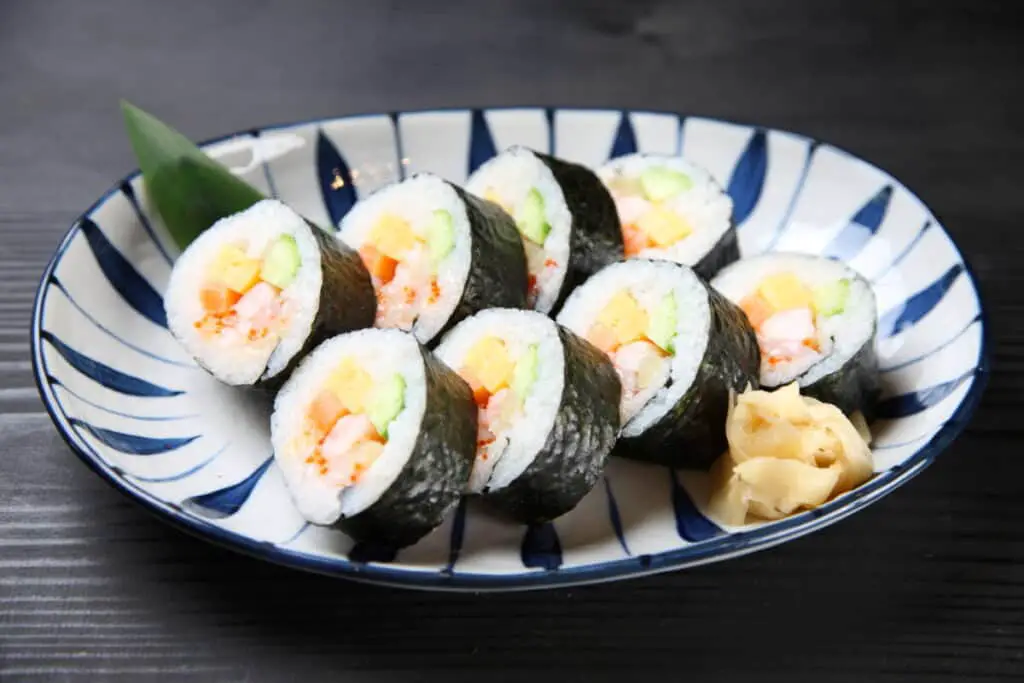
Gunkan Maki
Gunkan, which translates to “Battleship,” is a small hand-pressed rice ball wrapped in a thin ring of dry seaweed and topped with a variety of condiments. Gunkan is a type of sushi that resembles a warship. It is also known as gunkan maki.
Gunkanmaki was originally invented in 1941 at Ginza Kyubey, a sushi restaurant in Ginza, Tokyo. Soft loose foods might now be used as a sushi topping thanks to this idea. Gunkan refers to a battleship, and the dish’s name is inspired from its appearance.
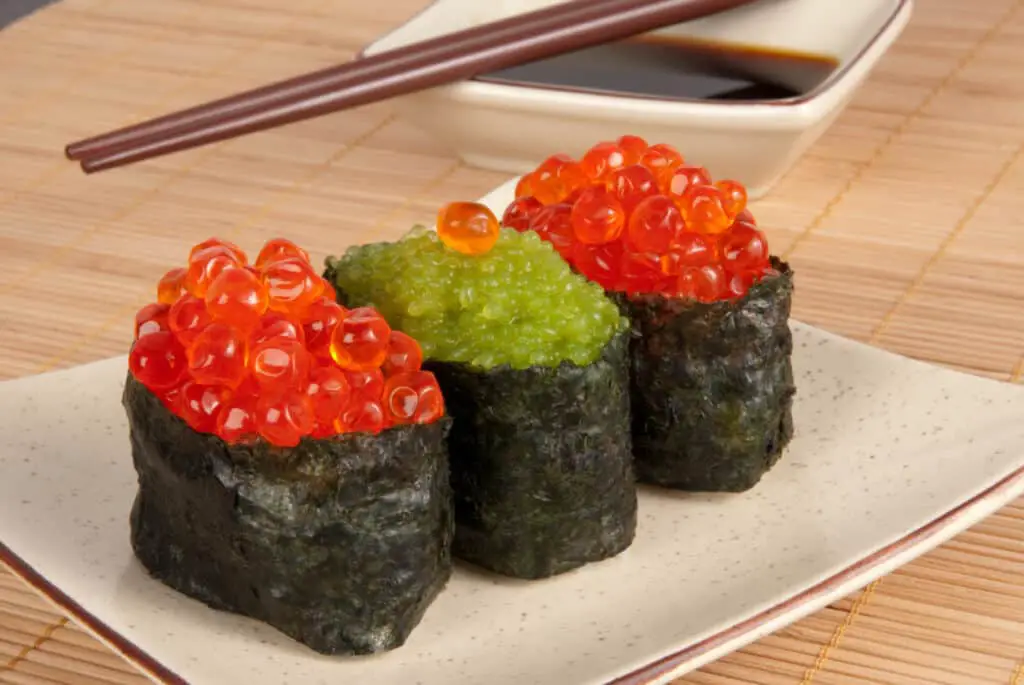
Although these are just the basic types of sushi found in Japan, other countries have made many changes additions and fusions.
Adding their own unique cultural and culinary taste and desires to their sushi.
Futomaki is a more common type of sushi in the west, and it comes in a variety of flavors named after their origins.
Other rolls may feature minced scallops, spicy tuna, beef or chicken teriyaki, and other veggies including cucumber and avocado, as well as the tempura roll, one that has shrimp tempura inside the roll or the whole roll battered and fried tempura-style.
Brown rice or black rice, often regarded as forbidden rice, is sometimes used to prepare rolls in Japanese cuisine.
Common sushi rolls in the west and what’s inside…
| Sushi roll name | Ingredients |
| Alaskan roll | smoked salmon on the inside or stacked on the outside |
| Boston roll | Instead of artificial crab, an uramaki California roll is made using poached shrimp |
| California roll | Avocado, imitation/crab stick, can contain real crab, cucumber, and tobiko are popular ingredients in uramaki, rice on the outside, nori on the inside |
| Dynamite roll | Includes yellowtail or shrimp tempura, and fillings such as bean sprouts, carrots, avocado, cucumber, chili, spicy mayonnaise, and roe |
| Hawaiian roll | canned shoyu tuna, tamago, kanpy, kamaboko, and the unique red and green shrimp powder |
| Mango roll | Avocado, crab meat, tempura shrimp, mango slices, and a creamy mango paste are layered on top |
| Michigan roll | Sushi rice, spicy tuna, smelt roe, spicy sauce, avocado |
| New Mexico roll | Green chile from New Mexico (tempura-fried), teriyaki sauce, and rice |
| Philadelphia roll | Raw or smoked salmon, Philadelphia cream cheese, cucumber, avocado, or onion |
| Rainbow roll | Wrapped with yellowtail, tuna, salmon, snapper, white fish, eel, and avocado |
| Seattle roll | Raw or smoked salmon, cucumber, avocado, cream cheese |
| Spicy tuna roll | Raw tuna is combined with mayonnaise infused using hot sauce |
| Spider roll | Cucumber, avocado, daikon sprouts or lettuce, roe, and occasionally spicy mayonnaise |
An Itamae is a person in Japan who has mastered the art of sushi preparation commonly referred to simply as sushi chefs. If you have been to a Japanese restaurant then you have seen these dedicated culinary artists.
Check out Jiro’s story here…

